
- •Light - Radiated when electrons in molecules move from a higher energy level
- •Visible light lies in the 400 and 700 nm range of wavelengths. X-rays
- •Additive Color Treory
- •Subtractive Color
- •Raster(True) Proofing
- •Hard proof
- •Effects due to the raster structure, such as gloss, contrast and range of
- •To produce a true color- scanning, ensuring identity with print run impression, some
- •Proof Print
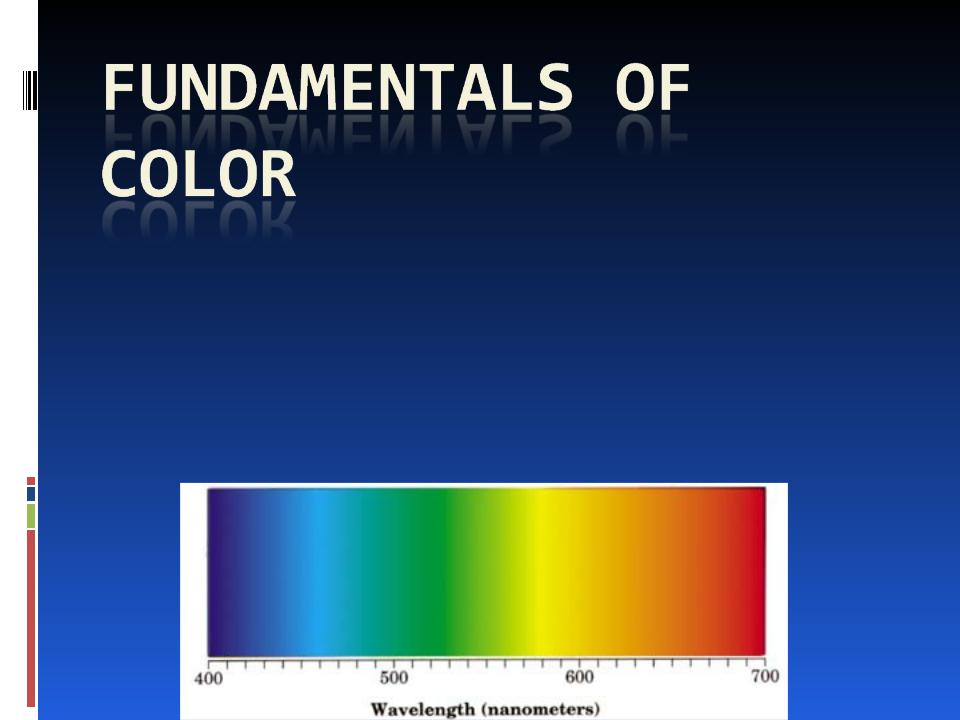
Light - Radiated when electrons in molecules move from a higher energy level to a lower one. A photon is produced to maintain conservation of energy and momentum.
If some of this radiated energy falls within the visible wavelength range it is detected by the human eye. Visible light is a small part of the electromagnetic spectrum, which includes X-rays, ultraviolet (UV), microwaves, Infrared (IR), radar and radio waves.

Visible light lies in the 400 and 700 nm range of wavelengths. X-rays and UV have shorter wavelengths and microwave, IR, radar and radio waves have longer wavelengths than visible light. Some mammals can perceive into the IR and UV range.
White light - Composed of many colors, essentially all of the visible colors in the visible range with equal intensities of each wavelength. Isaac Newton showed that white light could be split into all colors of the rainbow by passing through a prism.
Visible light appears to be split up into three predominant bands of light, red, green and blue. This results from how the human eye perceives light in terms of red, green and blue.
Thus, these are called the primary colors of light. Balanced amounts of R, G and B produce white light.
Computer monitors and TV screens use RGB to display color.
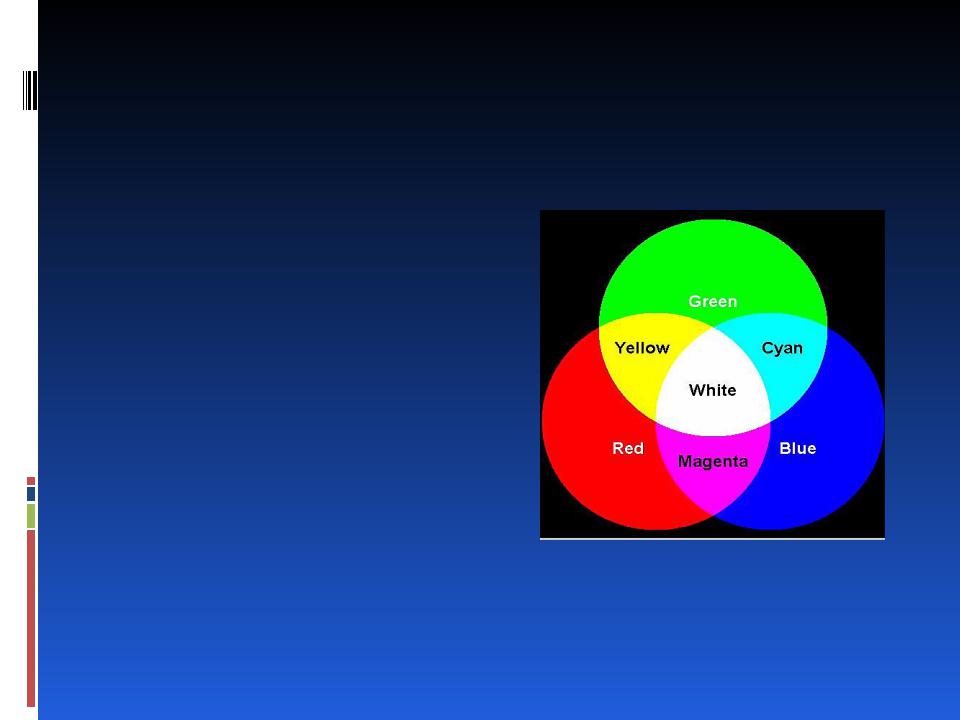
Additive Color Treory
White light is the sum of red, green and blue light. Black is the absence of color. Used for transmissive colors, i.e. light shines through an object. e. g. TV screen, Computer monitor, transparencies
produced from two color overlap
Blue + Green = Cyan
Red + Blue = Magenta
Green + Red = Yellow
Combining in unequal proportions yields new colors. Essentially all perceivable colors can be represented by different amounts of RGB. RGB is usually the native color model used by computers and is also used on most desktop scanners.
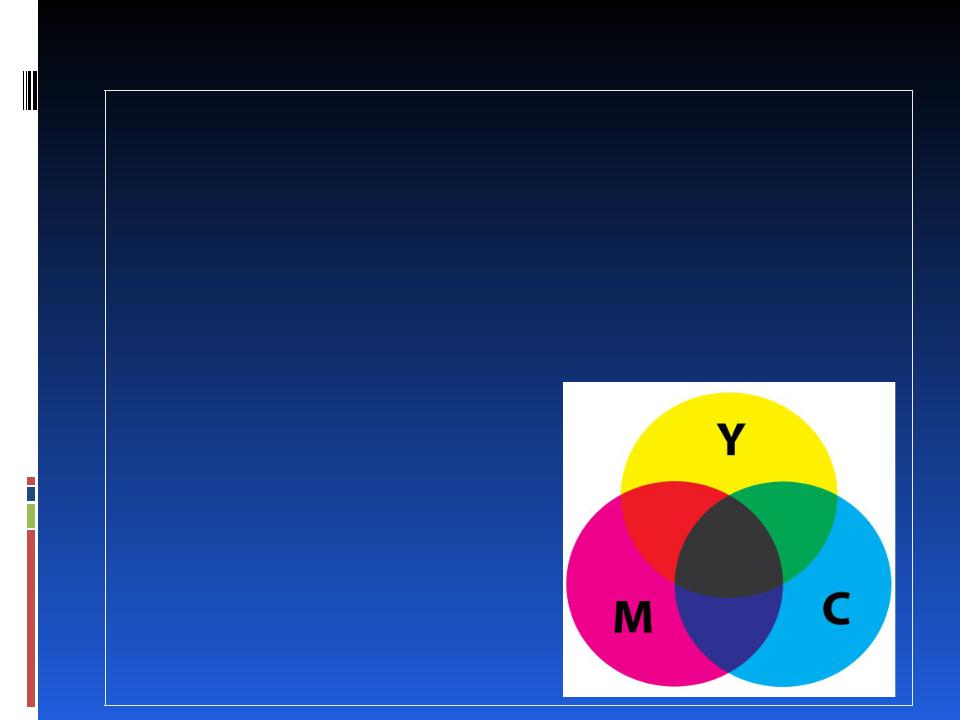
Subtractive Color
TheorySecondary colors are used as subtractive primaries, Cyan, Magenta and Yellow. Used when light is reflected from an object such as printed page or photograph. Pigments are examples of subtractive colors which reflect some wavelengths and absorb or subtract others. Cyan pigment absorbs Red and reflects Green and Blue, i.e. appears cyan. Magenta pigment absorbs Green and reflects red and blue, i.e. appears magenta. Yellow pigment absorbs blue and reflects red and green, i.e. appears yellow. When subtractive primaries are overprinted you get Red, Green and Blue (RGB). The subtractive primaries (CMY) can be thought of as the complements of R, G and B respectively.
Cyan + Yellow = Green
Cyan + Magenta = Blue
Magenta + Yellow = Red
Cyan + Magenta + Yellow = Black
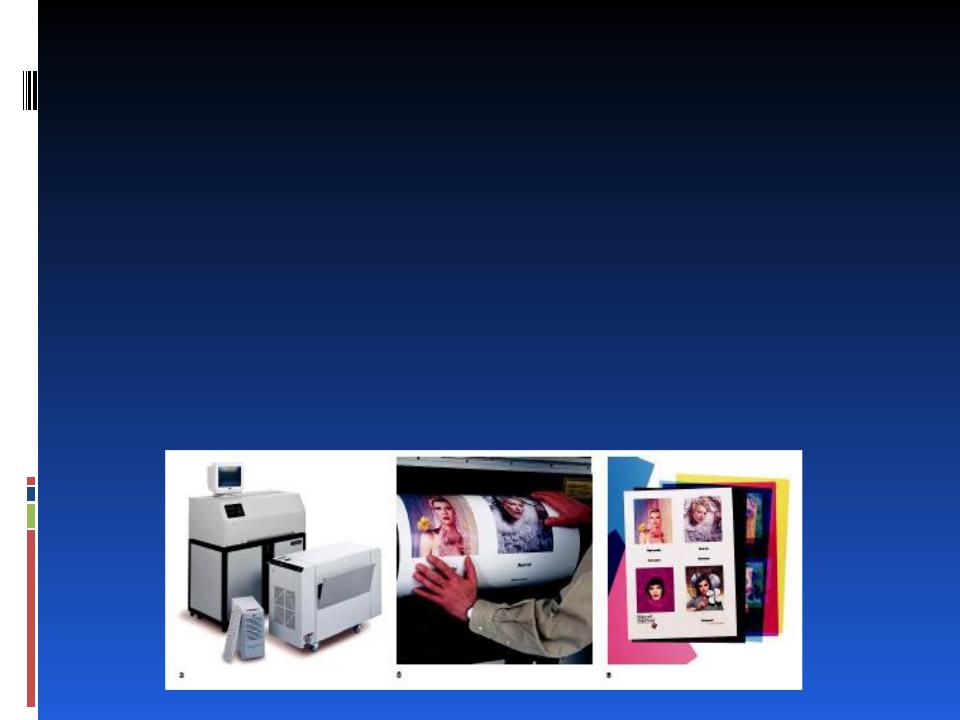
Raster(True) Proofing
If the digital printing methods can be modeled and raster structure of the future of the printed impression, then talk about raster proofing True-Proof). In this case, the quality of proofs, and also reproduces the structure of a raster image, the maximum is close to the quality of software distribution impression. Information about the structure of the halftone dots is a printmaker, inter alia, for the early detection of deviations of the size of halftone dots and the associated color changes or deviations in matching colors. If necessary, you can specifically interfere with the gradation curve of the
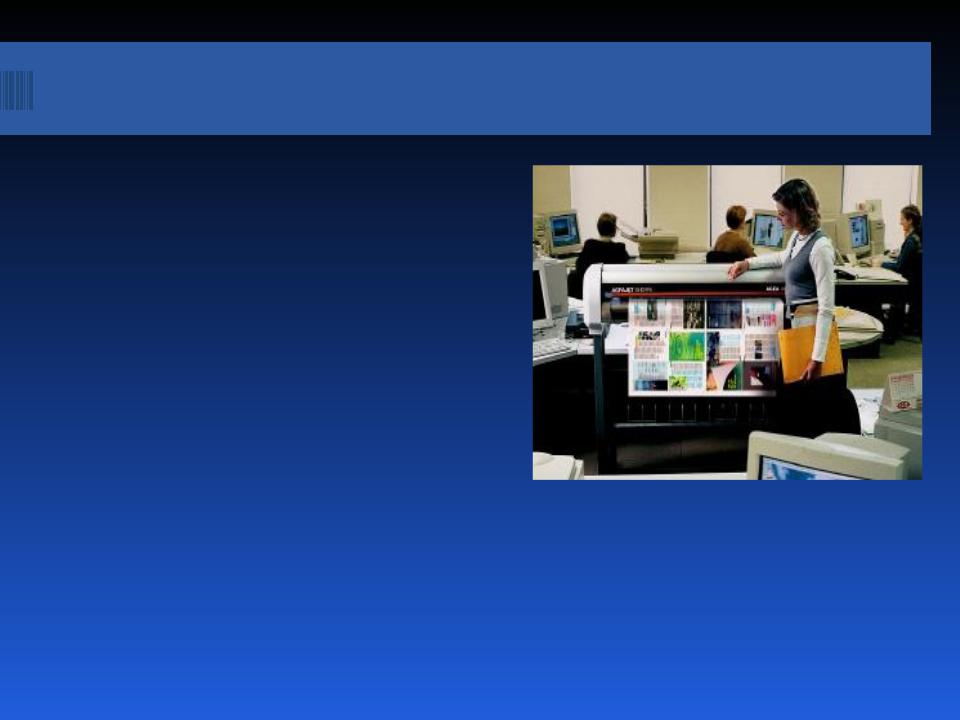
Hard proof
In the printing industry in the
manufacture of high-quality reproductions of proofing is to obtain images within the gamut of real synthesis of the printed (in color reproduction) and indicates the suitability of the content of the file for output. To do this all the more widely used standard printing systems, such as ink-jet printers (Figure 75, four-lane A4) or dye- sublimation printer (Fig. 71, 2-page format) in combination with high- performance color management system.
This type of proofing guide the printer responsible for circulation.
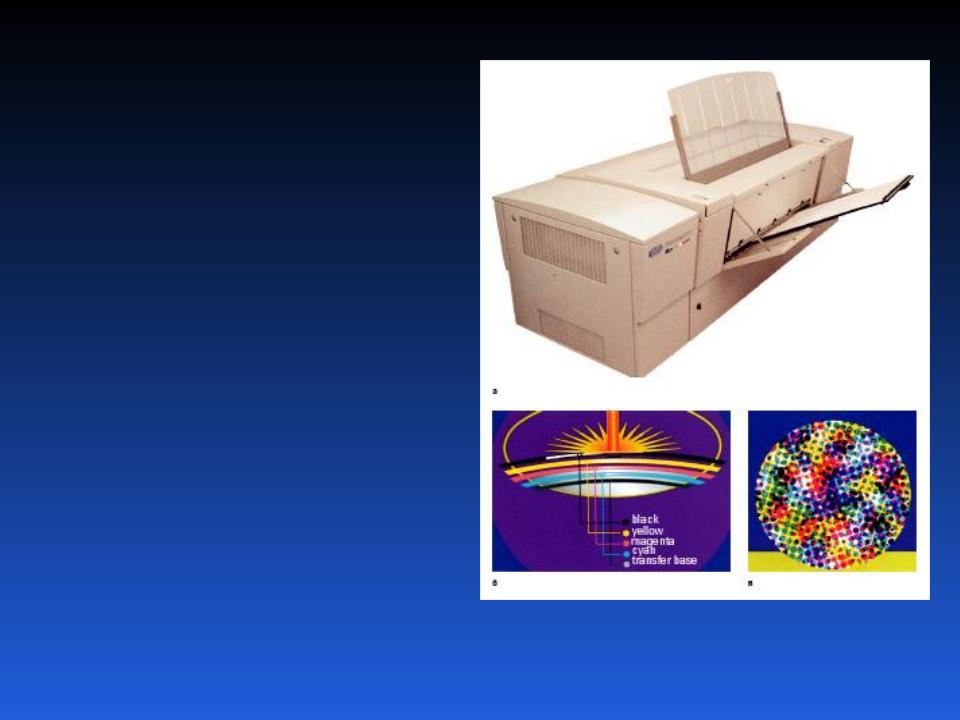
Effects due to the raster structure, such as gloss, contrast and range of variation of tones, or rosette moire effects can be identified prior to the printing process and if necessary, discussed with the customer.
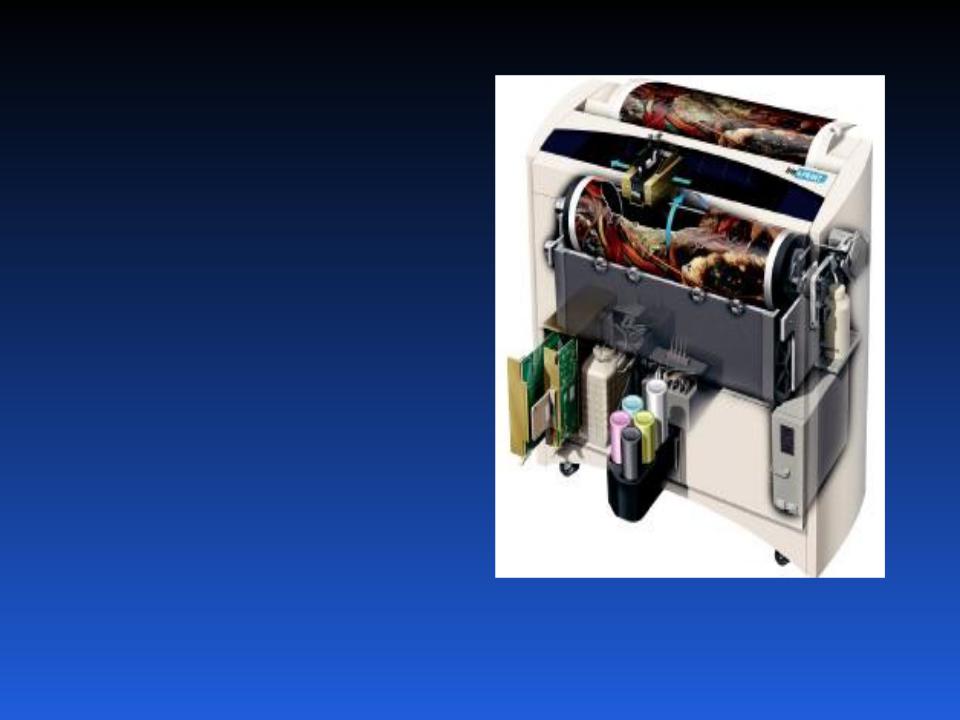
To produce a true color- scanning, ensuring identity with print run impression, some manufacturers offered a number of special systems using real paint multicolor printing synthesis (CMYK). Proofs are made with the use of color films and thermal transfer dyes for special media or on the lottery paper.
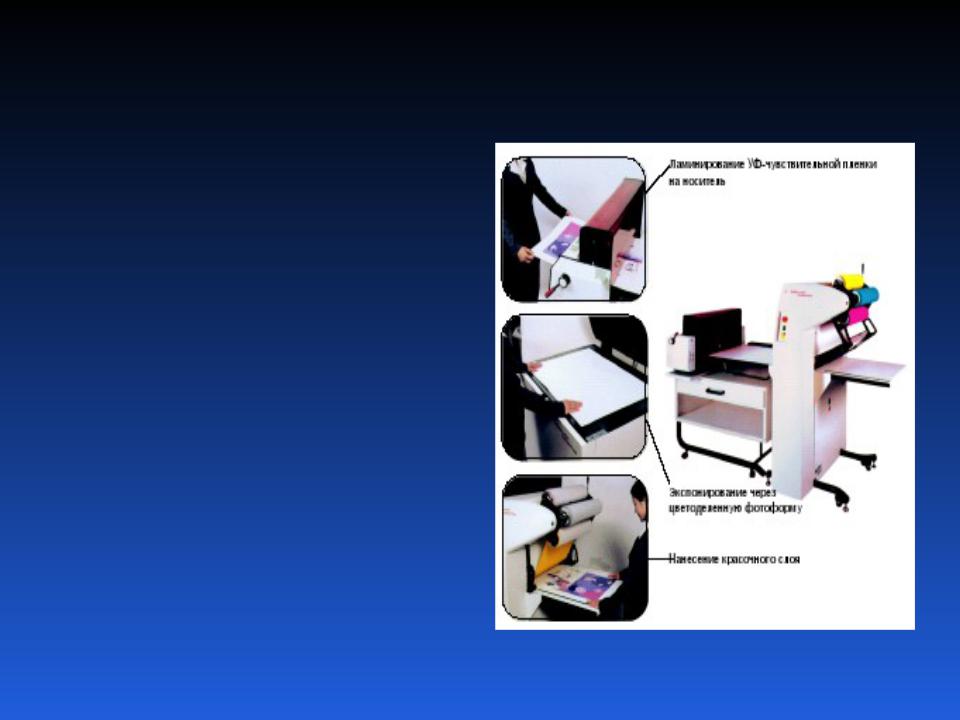
Proof Print
Proofs performed on Press-Proof, called proofrun . Short runs of 50 to 100 copies can be produced more cost-effectively than with other color proof processes. But for an individual (sole) color test this method economically unjustified.
